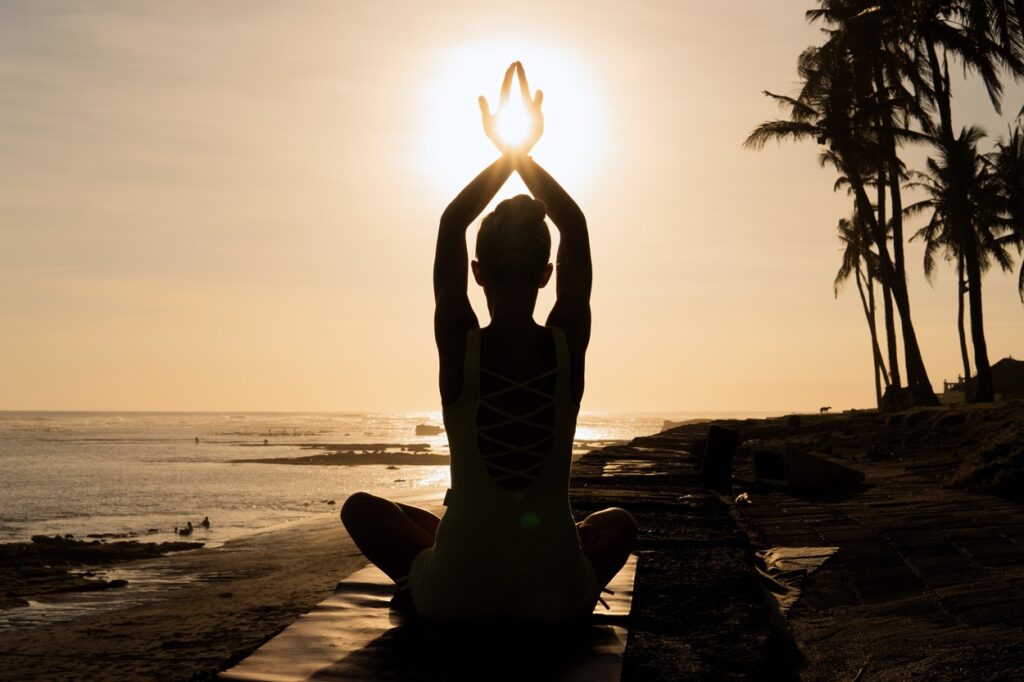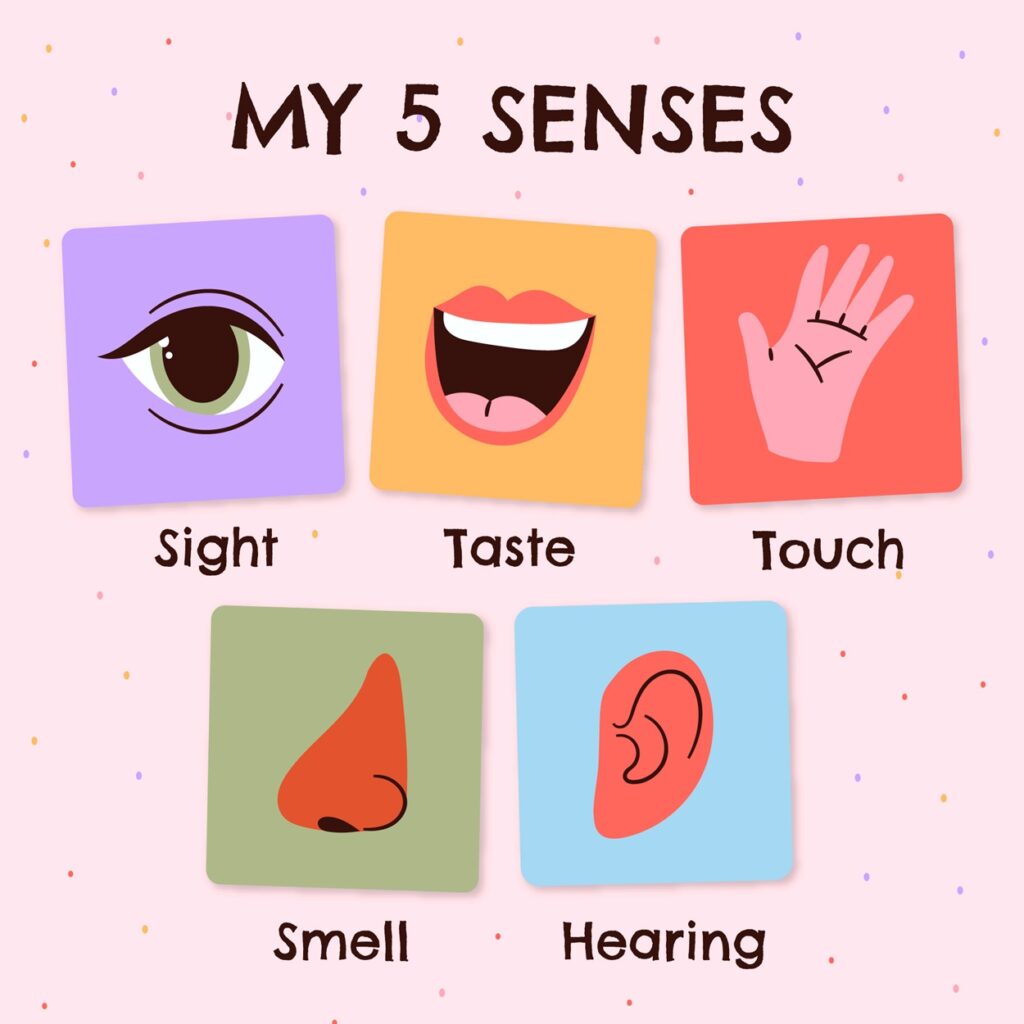Introduction to Mindful Yoga and Sensory Awareness
Mindful yoga is a practice that goes beyond physical poses to deeply engage and awaken all the senses. It’s about bringing a heightened awareness to each movement, breath, and moment. In this journey of sensory exploration, you’ll learn how to use yoga not just as a form of exercise, but as a tool to connect more deeply with your environment, your body, and your inner self.

In this first section, we explore what mindful yoga is and how it can help in awakening your senses. Mindful yoga involves paying close attention to the sensations in your body, the rhythm of your breath, and the thoughts and emotions that arise during your practice. It’s about being fully present in each pose, each inhalation, and each exhalation.
Engaging in mindful yoga helps in developing a deep sense of awareness that transcends the yoga mat. As you become more attuned to your sensory experiences, you’ll notice a heightened appreciation for the world around you. This awareness can lead to a more profound sense of peace, balance, and connection in your daily life.
The Essence of Breath in Mindful Yoga
Breathing is a fundamental aspect of yoga, and in the practice of mindful yoga, it takes a central role in awakening the senses. By focusing on the breath, you can enhance your sensory experience and deepen your yoga practice. Here are key points to consider:
- Observing the Breath: Begin your practice by simply observing the natural flow of your breath. Notice its rhythm, depth, and the sensations it brings to different parts of your body.
- Deepening Awareness with Pranayama: Incorporate pranayama (breath control) techniques to deepen your awareness. Practices like Ujjayi (Victorious Breath) or Anulom Vilom (Alternate Nostril Breathing) can help in calming the mind and sharpening the senses.
- Breath as a Bridge: Use your breath as a bridge between your body and mind. Each inhalation brings in energy and awareness, while each exhalation encourages release and relaxation.
This focused attention on the breath not only enhances lung capacity and oxygenation of the body but also brings a greater sense of mental clarity. It allows for a deeper connection with the present moment, a key aspect of awakening your senses through yoga.

Integrating Mindfulness into Yoga Poses
In mindful yoga, each pose becomes an opportunity to engage with and awaken your senses. This section delves into how mindfulness can transform your physical practice of yoga.
As you move into each yoga pose, bring your full attention to the experience. Notice the way your muscles stretch, how your weight distributes, and where you feel tension or ease. It’s not just about achieving the perfect form; it’s about how the pose feels in your moment. This approach encourages a deeper connection with your body and a heightened sensory experience.
For example, in a simple pose like Tadasana (Mountain Pose), stand with your feet firmly planted on the ground. Feel the earth beneath you, the air touching your skin, and the subtle movements of your body as you balance and stabilize. In more dynamic poses like Vinyasa flows, pay attention to the transition between poses, the fluidity of your movements, and the rhythm of your breath.
Mindful yoga also involves acknowledging and respecting your body’s limits. Listen to what your body tells you and adjust your practice accordingly. This attentiveness not only prevents injury but also fosters a compassionate and nurturing relationship with your body.
By integrating mindfulness into each pose, you transform your practice from a series of physical exercises into a deeply sensory and introspective journey. This mindful approach to yoga poses helps in cultivating a greater sense of presence, awareness, and connection to the present moment.
A Practical Guide to Mindful Yoga Poses
To help you incorporate mindful yoga into your practice, here’s a simple guide outlining various poses and the sensory experiences they can evoke. This table serves as a roadmap to enhance your sensory awareness through yoga.
| Yoga Pose | Sensory Focus | Mindful Practice Tips |
|---|---|---|
| Tadasana (Mountain Pose) | Grounding | Feel the soles of your feet connecting with the earth. Notice the strength and stability in your legs. |
| Balasana (Child’s Pose) | Comfort and Security | Pay attention to the feeling of being grounded and the sensation of the breath in your back. |
| Vrksasana (Tree Pose) | Balance and Harmony | Observe the sensations of balancing, the focus required, and the air on your skin. |
| Adho Mukha Svanasana (Downward-Facing Dog) | Stretch and Release | Notice the stretch along your spine and legs, and the release of tension. |
| Savasana (Corpse Pose) | Relaxation and Release | Be aware of the entire body relaxing, the gentle rise and fall of your chest with each breath. |
This guide is designed to help you focus on different sensory experiences in each pose. For instance, in Tadasana, the focus is on the grounding sensation of your feet on the mat, promoting a sense of stability and connection to the earth. In Balasana, it’s about embracing comfort and security, allowing yourself to feel supported and sheltered.
The purpose of this table is to encourage you to explore the sensory aspects of each pose, enriching your practice by turning it into a mindful exploration of body and mind. Use this guide as a starting point, and feel free to expand upon it with your own experiences and observations.
Enhancing Mindful Yoga with Sensory Elements
Incorporating different sensory elements into your yoga practice can significantly enhance the experience of mindfulness. Here are some ways to engage your senses more deeply during yoga:
Visual Elements:
- Use calming visuals in your practice space, such as soothing colors or soft lighting.
- If possible, practice yoga in a natural setting where you can absorb the beauty of the surroundings.
Auditory Stimulation:
- Incorporate soothing music or nature sounds to deepen your sensory experience.
- Pay attention to the sound of your own breath, using it as a tool to anchor your mind in the present moment.

Tactile Sensations:
Integrating tactile elements is also a powerful way to awaken the senses. This can include:
- Experiment with different textures for your yoga mat or clothing to enhance the sense of touch.
- During poses, focus on the contact points between your body and the mat, noticing the sensations this creates.
Aromatherapy:
The sense of smell is closely linked to memory and emotion, making it a potent tool for mindfulness:
- Use essential oils or scented candles to create an aromatic environment that supports your practice.
- Choose scents that resonate with you personally, whether they’re calming, energizing, or grounding.
Mindful Consumption:
Lastly, mindful eating or drinking post-yoga can be a wonderful way to engage the sense of taste and complete your sensory journey:
- After your practice, try consuming something with mindfulness, such as a cup of herbal tea or a piece of fruit. Pay attention to the flavors, textures, and sensations.
By incorporating these sensory elements, your yoga practice becomes a rich tapestry of experiences that not only heighten awareness but also create a deeper connection with the present moment and the world around you.
Connecting Mindful Yoga to Daily Life
The journey of awakening your senses through mindful yoga extends far beyond the confines of your yoga mat. It’s about integrating the principles of mindfulness, sensory awareness, and presence into your everyday life. Here’s how you can carry the essence of mindful yoga into your daily routines:
Incorporate Mindful Moments: Throughout your day, take short breaks to pause and bring your attention to the present moment. Whether it’s a mindful sip of tea, a deep breath before a meeting, or a moment of gratitude for a beautiful sight, these small pauses can reconnect you with your senses and enhance your overall well-being.
Savor Daily Activities: Approach daily activities with mindfulness. When eating, savor each bite, paying attention to the taste, texture, and aroma of your food. While walking, feel the ground beneath your feet and the rhythm of your steps. Engaging your senses in these ordinary moments can turn them into opportunities for sensory exploration.
Embrace Nature: Spending time in nature is a powerful way to awaken your senses. Take walks in parks, forests, or by the beach, and immerse yourself in the sights, sounds, and scents of the natural world. Nature has a unique ability to ground you in the present and enhance your sensory awareness.
Practice Gratitude: Cultivate a sense of gratitude for the sensory experiences life offers. Whether it’s the warmth of the sun on your skin, the laughter of loved ones, or the taste of a favorite meal, acknowledging these moments with gratitude amplifies your sensory connection.
Final Thoughts
By integrating these practices into your daily life, you carry the essence of mindful yoga with you wherever you go. Your senses become your guides to a richer, more meaningful existence, enhancing your ability to savor each moment, find balance, and deepen your connection to the world around you.




